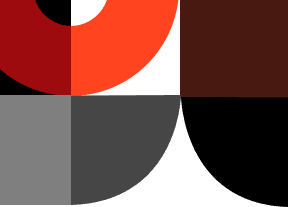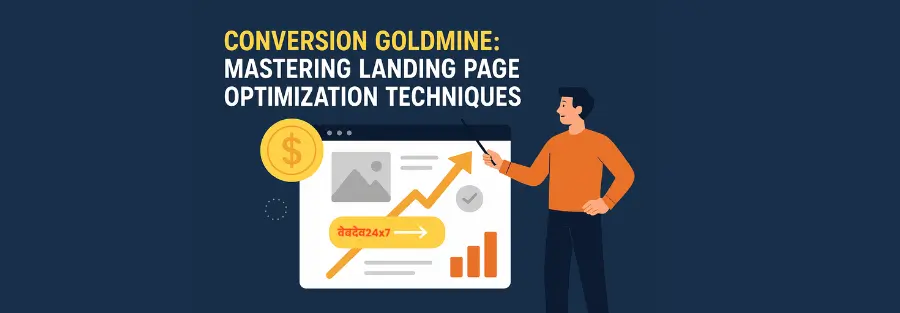Welcome to the world of landing pages! Whether you’re a seasoned marketer or just starting, understanding and implementing landing page optimization techniques is crucial for driving conversions and achieving your online goals. This guide will delve into the core principles of effective landing pages, equipping you with the knowledge and strategies needed to turn visitors into customers.
What is Landing Page Optimization?
The Core Purpose of a Landing Page
A landing page is a standalone web page designed for a specific purpose: to convert visitors. Unlike your homepage, which often serves a broader informational role, a landing page focuses on a single call-to-action (CTA). This could be anything from signing up for a newsletter and downloading an ebook, to purchasing a product or requesting a demo. Landing pages are all about directing a visitor towards a desired outcome.
Why Optimization Matters: Boosting Conversions
Simply having a landing page isn’t enough. To truly succeed, you need to optimize it. Landing page optimization is the process of improving your landing page to increase the percentage of visitors who take the desired action. This involves analyzing data, experimenting with different elements, and refining your page based on user behavior. By consistently optimizing, you can significantly boost your conversion rates, leading to more leads, sales, and overall business growth.
Key Landing Page Elements to Optimize
Compelling Headline Strategies
Your headline is the first thing visitors see, so it needs to grab their attention immediately. Focus on clarity and value. Use a headline that clearly communicates what the visitor will get by engaging with your offer. Consider using numbers (e.g., “5 Tips to Boost Your Sales”), questions, or a strong benefit-driven statement (e.g., “Get Instant Access to Our Free Ebook”). Make sure your headline aligns with the ad or link that brought the user to the page, maintaining message match.
Crafting a Powerful Value Proposition
Your value proposition explains why a visitor should choose you over the competition. Clearly articulate the benefits of your offer and what problems it solves for the user. Be concise, specific, and focus on what makes your product or service unique. Highlight the key advantages and advantages to compel users to take action. A well-crafted value proposition answers the question: “What’s in it for me?”
The Importance of Clear, Concise Copy
Avoid overwhelming your visitors with lengthy blocks of text. Use clear, concise, and easy-to-understand language. Break up your copy with subheadings, bullet points, and visuals. Focus on the key benefits and features, and avoid jargon that might confuse or alienate your audience. Keep the tone conversational and engaging, while clearly and succinctly communicating your message.
Optimizing Visuals: Images and Videos
Visuals play a crucial role in capturing attention and conveying your message. Use high-quality images and videos that are relevant to your offer. Optimize your visuals for both desktop and mobile devices to ensure a great user experience. Consider using videos to explain complex concepts, showcase your product in action, or add a personal touch. Ensure your visuals support and enhance your copy.
Call-to-Action (CTA) Best Practices
Your CTA is the most critical element of your landing page. Make it clear, concise, and visually prominent. Use action-oriented language (e.g., “Get Started,” “Download Now,” “Sign Up Today”). Make your CTA button stand out from the rest of the page with a contrasting color and sufficient whitespace. Place your CTA strategically above the fold and at the end of your page, so it’s easily visible. Test different CTAs to see what converts best. Keep the focus on what the user will *get* and use action verbs.
Data-Driven Optimization: Analytics & Testing
Setting Conversion Goals
Before you start optimizing, define your goals. What action do you want visitors to take? Is it to fill out a form, make a purchase, or download a resource? Clearly define your conversion goals and set measurable targets. This will help you track your progress and determine the effectiveness of your optimization efforts.
Understanding A/B Testing
A/B testing (also known as split testing) is a powerful method for comparing two versions of your landing page to see which performs better. Test one variable at a time (e.g., headline, CTA button color, image). Randomly show each version to a portion of your traffic and analyze the results to determine which version drives higher conversions. Iterative testing is key.
Analyzing User Behavior with Heatmaps
Heatmaps provide valuable insights into how users interact with your landing page. They visualize user behavior by showing where visitors click, scroll, and spend the most time on the page. Analyze heatmaps to identify areas of interest, identify potential areas for improvement and optimize your layout accordingly. They reveal insights into areas of friction and provide clarity for optimization.
Key Metrics to Track: Bounce Rate, Conversion Rate, etc can give you better tracking in terms of Landing Page Optimization.
Tracking key metrics is essential for understanding the performance of your landing page. Some important metrics to monitor include:
- Conversion Rate: The percentage of visitors who complete the desired action.
- Bounce Rate: The percentage of visitors who leave your page without taking any action.
- Click-Through Rate (CTR): The percentage of people who click on a specific element, such as a CTA.
- Time on Page: How long users spend on your landing page.
- Cost Per Acquisition (CPA): The cost of acquiring a new customer or lead.
- Lead Generation Rate: How many leads have signed up.
Analyze these metrics to identify areas for improvement and track the impact of your optimization efforts.
Mobile Optimization for Landing Pages
Responsive Design is Crucial for Landing Page Optimization
With the increasing use of mobile devices, it’s essential to have a responsive design that adapts to different screen sizes. Ensure your landing page looks and functions flawlessly on smartphones and tablets. A responsive design ensures that your page is optimized for mobile, improving user experience and conversion rates.
Mobile-First Considerations: Speed & User Experience is the first approach we set for Landing Page Optimization
Mobile users often have shorter attention spans and slower internet connections. Optimize your landing page for speed by compressing images, minimizing code, and leveraging browser caching. Keep your design clean and simple, with clear navigation and easy-to-read text. Prioritize the mobile user experience by focusing on ease of use and providing a streamlined experience.
Avoiding Common Landing Page Optimization Mistakes
Overwhelming Users with Information
Too much information can overwhelm visitors and make it difficult for them to understand your offer. Focus on the essential information and avoid unnecessary details. Use clear and concise language, and break up your content with visuals and subheadings.
Ignoring the User’s Journey
Think about the user’s journey from the initial ad or link to your landing page. Make sure your landing page content aligns with the messaging in your ad. A disconnect can lead to confusion and high bounce rates. Address the user’s intent and provide a seamless experience from start to finish.
Slow Page Load Speeds
Slow page load speeds can frustrate users and lead to high bounce rates. Optimize your page for speed by compressing images, minimizing code, and using a content delivery network (CDN). Ensure your page loads quickly on both desktop and mobile devices.
Poor Mobile Experience
If your landing page isn’t optimized for mobile, you’re likely missing out on a significant portion of your audience. Ensure your page is responsive and provides a seamless experience on all devices. Test your page on various mobile devices to identify and address any issues.
Tools and Resources for Landing Page Optimization
Popular Landing Page Optimization Builders
Several tools make it easy to create and optimize landing pages without any coding. Some popular options include:
- Unbounce: A dedicated landing page platform with powerful A/B testing and analytics features.
- Leadpages: Simple, user-friendly landing page builder with a wide range of templates.
- Instapage: A robust platform with advanced features and integrations for marketers.
- ClickFunnels: A sales funnel builder that allows you to create landing pages, sales pages, and more.
- WordPress Plugins: Plugins like Elementor and Beaver Builder offer drag-and-drop landing page creation capabilities within WordPress.
Analytics Platforms to Use
Track your landing page performance using analytics platforms. Popular choices include:
- Google Analytics: A free, powerful analytics platform for tracking website traffic, user behavior, and conversions.
- Google Tag Manager: A free tag management system for managing analytics and marketing tags on your website.
A/B Testing Software Options
Implement A/B testing to continuously improve your conversion rates. Consider tools like:
- Google Optimize: A free A/B testing tool from Google.
- Optimizely: A popular A/B testing platform with advanced features.
Case Studies and Examples
Successful Landing Page Optimization Makeovers
Researching successful landing page examples can provide inspiration and valuable insights. Look for landing pages in your industry and analyze their design, copy, and CTAs. Identify what makes them effective and apply those principles to your own pages. Study what others are doing successfully. This can involve A/B testing campaigns to understand what works.
Learning from the Best: Industry Leaders
Follow industry leaders and experts in landing page optimization. Learn from their strategies and best practices by following their blogs, attending webinars, and studying their successful campaigns.
Conclusion
Mastering landing page optimization techniques is an ongoing process. By understanding the key elements of effective landing pages, employing data-driven testing, and staying current with industry best practices, you can unlock a conversion goldmine for your business. Continuous improvement is the key, so keep testing, analyzing, and refining your landing pages to achieve optimal results. Implement the strategies outlined here, and watch your conversion rates soar!
More topics…





